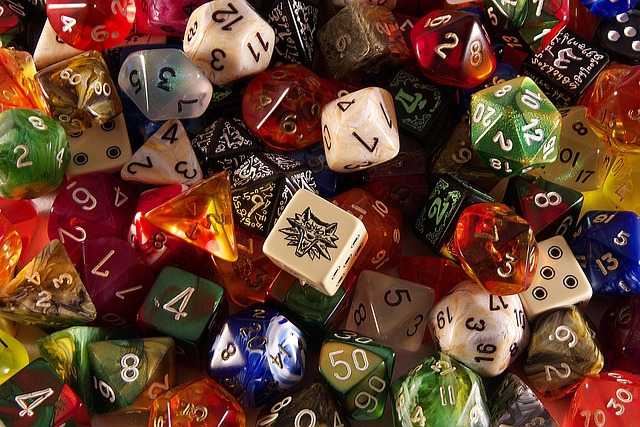Table of Contents
- Exploring the Definition of Art in Contemporary Contexts
- Challenging Traditional Aesthetics and Artistic Values
- Understanding the Emotional Disconnect in Modern Art
- The Role of Intent and Audience Interpretation in Art
- Navigating the Future: Embracing Diverse Art Forms
- Q&A
- Concluding Remarks


Exploring the Definition of Art in Contemporary Contexts
The contemporary landscape of artistic expression blurs the lines between traditional definitions and bold innovations, prompting discussions that challenge what we consider “art.” In this dynamic environment, artists leverage diverse mediums and concepts, from digital installations to immersive performances. The ambiguity surrounding these practices raises questions about authenticity and intent. Is a simple act of expression enough to qualify as art in a world saturated with visual stimuli? This query leads many to contemplate whether the essence of art lies in its ability to provoke thought and emotion or simply in its aesthetic appeal.
This evolving definition often hinges on the boundaries set by the art community itself, morphing with each generation’s norms and societal influences. Contemporary works may encompass multimedia experiences, interactive pieces, and even works that defy the conventional “gallery” setup. Artists today are not merely creators; they act as commentators on society, pushing viewers to confront complex issues, such as identity, culture, and politics. This has led to a shift, where engagement and dialogue become central aspects of the artistic experience, transforming passive viewing into an active exploration.
To better understand how contemporary views of art diverge from traditional definitions, consider the following aspects:
| Aspect | Traditional View | Contemporary View |
|---|---|---|
| Medium | Paintings and sculptures | Digital art, performance, installation |
| Purpose | Aesthetic pleasure | Provoking thought, sparking dialogue |
| Interaction | Passive observation | Active participation |
By navigating these contrasting perspectives, one can grasp the nuances that underline contemporary art’s definition. This fluidity not only reflects the diverse voices and experiences of today’s artists but also invites audiences to redefine their relationships with art itself. Ultimately, as discourse around creative expression continues to expand, so too will our understanding of what it truly means to create and engage with art in contemporary society.
Challenging Traditional Aesthetics and Artistic Values
The evolution of modern artistic expressions has sparked a contentious debate about the nature of art itself. Advocates for traditional aesthetics often highlight a set of values that define excellence—technique, form, and representation. However, the advent of modern art challenges these long-held beliefs, pushing the boundaries of what can be classified as art. This shift invites us to consider the concept of intention: is the artist’s purpose in creating a piece paramount, regardless of technical execution?
Within this context, modern art often embraces a diverse range of materials and methods. From found objects to multimedia installations, the medium becomes as much a part of the statement as the artwork itself. This leads us to question traditional hierarchies in artistic value. A few noteworthy aspects include:
- Context over Craft: The setting and message can define a work’s significance.
- Viewer Interaction: Modern works often require audience engagement, shifting perception from static to dynamic.
- Conceptual Frameworks: Ideas take precedence over aesthetic beauty, redefining creativity.
Furthermore, the democratization of art in the modern era has blurred previously rigid distinctions. Various platforms, including digital media and social networks, enable artists to reach audiences directly, dismantling traditional gatekeeping. The resulting inclusivity offers a broader spectrum of representations and interpretations. Consider the following table that summarizes key differences between traditional and modern artistic approaches:
| Aspect | Traditional Art | Modern Art |
|---|---|---|
| Technique | Emphasis on skill and craftsmanship | Focus on the idea and context |
| Materials | Paint, canvas, sculpture materials | Variety of unconventional materials |
| Interaction | Passive observation | Active viewer participation |


Understanding the Emotional Disconnect in Modern Art
In the labyrinth of modern art, many find themselves grappling with a sense of alienation. The bold colors and striking forms that dominate contemporary galleries often serve as a façade, obscuring the emotive threads that once connected viewers to painters. Unlike the classical masterpieces that stirred the soul with skillful techniques and timeless themes, many argue that today’s artworks lack emotional resonance, leaving spectators adrift in a sea of abstraction. This disconnect can be attributed to various factors, including the prioritization of concept over craftsmanship and the increasing complexity of artistic statements.
Furthermore, the evolution of art in the modern era has ushered in an age where definitions have become fluid. Artists exploit the boundaries of what art can be, resulting in installations that challenge perception rather than elicit heartfelt reactions. Many modern pieces are designed to provoke thought rather than emotions, leading to a growing cynicism among audiences. This shift invites a question: Is emotional connection still a vital aspect of art? Or has it been sacrificed at the altar of innovation? The prevailing belief seems to suggest that the satisfaction of the viewer is secondary to the creator’s self-expression.
To understand this phenomenon, one must consider several pivotal aspects that have contributed to emotional detachment in contemporary works:
- Conceptual Dominance – Emphasis on ideas often overshadows technical execution.
- Viewer Disengagement – Many artworks create barriers that make it hard for audiences to connect.
- Market Influence – The commercialization of art often compromises its emotional integrity.
| Factor | Impact on Emotional Connection |
|---|---|
| Conceptual Art | Prioritizes ideas over feelings, fostering detachment. |
| Abstract Forms | Can confuse and alienate viewers, making connection difficult. |
| Commercialization | Encourages trends over emotional expression, compromising integrity. |


The Role of Intent and Audience Interpretation in Art
Art, in its myriad forms, is fundamentally shaped by the intent behind its creation and the interpretation of its audience. Artists often embark on a journey driven by personal narratives, societal critiques, or emotional expressions, crafting pieces that embody their thoughts and feelings. However, this intrinsic intent can be obscured or entirely reshaped by the viewer’s perception, leading to a diverse array of interpretations. For instance, a painting intended as a poignant social commentary may be dismissed as mere decoration by an audience untrained in recognizing its deeper significance.
The relationship between an artist’s intention and audience interpretation often leads to a fascinating dialogue. Different backgrounds, experiences, and cultural contexts inform how viewers engage with modern art, sometimes resulting in a disconnect. For example, a contemporary installation piece may bewilder one observer while profoundly resonate with another. Engaging with different perspectives can enrich the overall experience of art, illustrating that its value extends beyond the artist’s original message.
| Interpretation Factors | Influence on Art Perception |
|---|---|
| Personal Experience | Shapes emotional connection to the artwork. |
| Cultural Background | Influences understanding of themes and symbols. |
| Art Education | Affects ability to analyze and critique art. |
| Social Environment | Creates communal narratives around artworks. |
Ultimately, this dynamic interplay of artist intention and audience interpretation challenges the traditional confines of what art is or should be. Modern art, with its unconventional techniques and abstract themes, often invites questioning and debate. By acknowledging varying interpretations, the discourse around the nature of art expands, inviting us to reevaluate our definitions. In this light, modern art becomes a reflection of society’s complex and multifaceted nature, rather than an isolated expression of individual intent.


Navigating the Future: Embracing Diverse Art Forms
As the art world continues to evolve, it’s crucial to recognize the immense value of diverse artistic expressions that go beyond traditional boundaries. Artists today are harnessing a multitude of mediums, from digital installations to performance art, thereby expanding the definition of what constitutes art. This diversification encourages a more inclusive dialogue about creativity, allowing voices that have historically been marginalized to emerge and thrive.
Embracing these varied art forms invites us to explore concepts and perspectives that challenge our understanding of beauty and meaning. Street art, multimedia installations, and even virtual reality experiences push the envelope, turning public spaces into canvases for social commentary. These forms resonate not only aesthetically but also emotionally, serving as catalysts for conversations about culture, identity, and the human experience. The impact of such art can foster community, inspire change, and connect us in unprecedented ways.
To appreciate the richness of contemporary art, we must be open to dismantling preconceived notions and engaging with innovative practices. A shift in perspective is necessary; instead of clinging to traditional definitions, we should embrace a broader spectrum that includes:
- Interactive Art: Encourages audience participation to create a shared experience.
- Digital Art: Utilizes technology as a medium, challenging the idea of physicality in artistic expression.
- Performance Art: Transforms the act of creation into an experience that embodies time, space, and identity.
By examining these diverse strands of artistic expression, we can nurture a richer understanding of what it means to be an artist today. A comprehensive approach could include structured programs promoting interdisciplinary collaboration, as outlined in the following table:
| Program Name | Focus Area | Target Audience |
|---|---|---|
| Art in the Community | Public Installations | Local Residents |
| Technology Meets Art | Digital Collaborations | Tech Enthusiasts |
| Theater for Change | Performance Art | Young Adults |
This framework not only facilitates the exploration of novel artistic avenues but also promotes inclusivity and dialogue, ensuring that all voices can be heard in the ever-evolving tapestry of modern creativity.
Q&A
Q&A: Exploring the Debate on Whether Modern Art is Truly Art
Q1: What is modern art, and how does it differ from traditional art? A1: Modern art refers to artistic works produced roughly from the late 19th century to the 1970s, characterized by a break from traditional styles and techniques. This period saw artists experimenting with abstract forms, materials, and innovative concepts, often challenging societal norms. Unlike traditional art, which often focused on realism and representation, modern art emphasizes individual expression, conceptual ideas, and non-traditional media.Q2: Why do some argue that modern art is not art? A2: Critics of modern art often claim that it lacks the technical skill and craftsmanship associated with traditional art forms. They argue that many modern works appear simplistic or nonsensical, leading them to question the intent and value behind such creations. Additionally, some believe that modern art prioritizes shock value over aesthetic appreciation, which challenges their understanding of what constitutes “real” art.
Q3: What criteria are typically used to define art? A3: Art is often defined by several criteria, including creativity, intent, emotional expression, and engagement with the audience. A work is typically considered art if it communicates ideas or emotions, invites interpretation, or challenges viewers’ perceptions. However, these criteria can be subjective, leading to divergent opinions on what qualifies as art, particularly concerning modern artistic expressions.
Q4: Can subjective interpretation affect our understanding of modern art? A4: Absolutely! The beauty of art lies in its ability to evoke different responses from viewers. Modern art often invites personal interpretation, which means two individuals may perceive the same piece in vastly different ways. This subjectivity can lead to debates over legitimacy, with some feeling excluded from understanding or appreciating contemporary works, thus reinforcing their stance that modern art is not “real” art.
Q5: What role do artists play in the perception of modern art? A5: Artists are fundamental to shaping the discourse around modern art. By pushing boundaries and exploring new ideas, they challenge audiences to rethink their notions of creativity and value. Their intent—whether to provoke thought, elicit emotion, or critique society—plays a crucial role in how their work is interpreted. The conversation often revolves around whether the artist’s message is effectively conveyed and received.
Q6: How does historical context influence opinions on modern art? A6: Historical context is vital in understanding the evolution of art movements. As society changes, so too does the definition and purpose of art. The emergence of modern art coincided with significant cultural shifts, including industrialization, global conflicts, and the rise of individualism. These changes influenced perceptions of what art could represent, often leading to divides between traditionalists and modernists who interpret significance and meaning differently based on the times.
Q7: Are there examples of modern art that have gained widespread acceptance? A7: Yes, several modern art pieces have gained significant acclaim and are considered iconic. Works like Marcel Duchamp’s “Fountain” and Jackson Pollock’s drip paintings have reshaped the art world, prompting discussions and new interpretations about artistic value. These pieces, while sometimes controversial, have become critical components of art history, proving that even the most disputed forms can enter the mainstream dialogue about art.
Q8: what can be said about modern art and its place in the art world? A8: The debate over whether modern art is “real” art showcases the evolving nature of artistic expression and cultural understanding. While some may reject it based on set criteria, others embrace its innovative spirit and the conversations it sparks. Ultimately, modern art challenges us to expand our definitions and enables us to reflect on the diverse and dynamic nature of human creativity.
